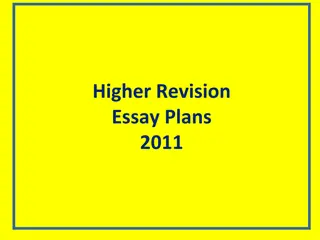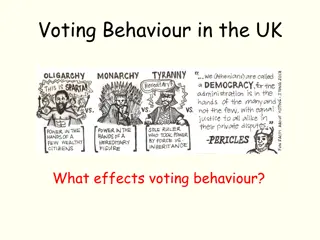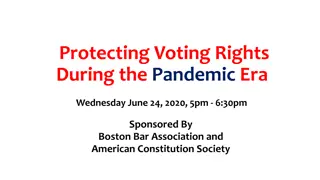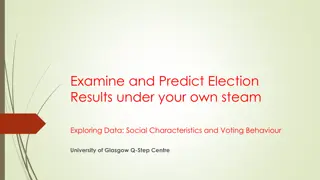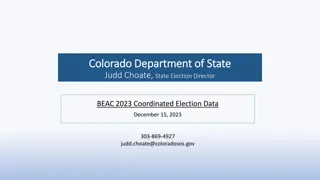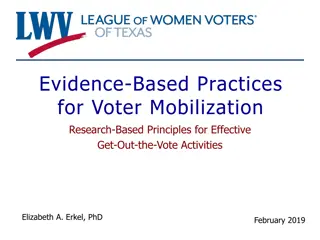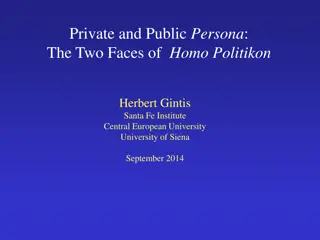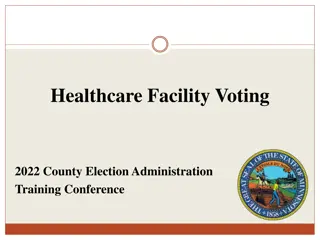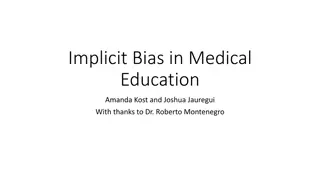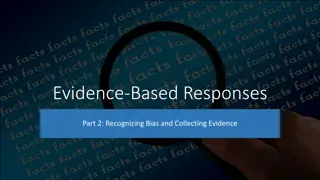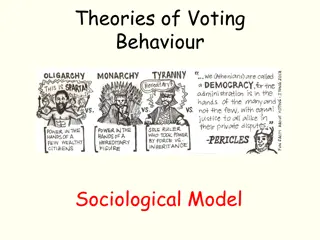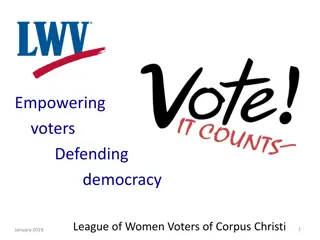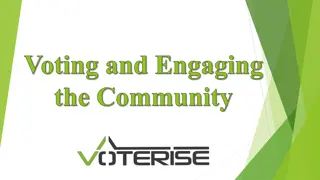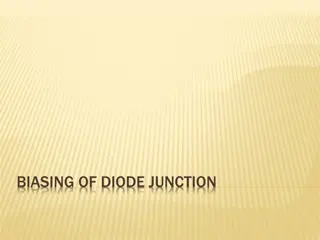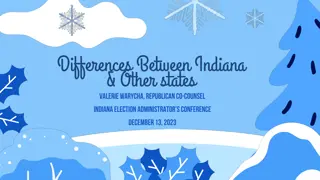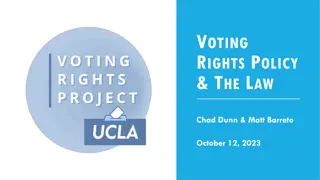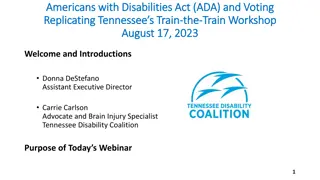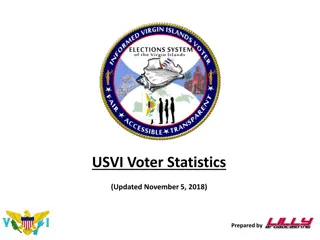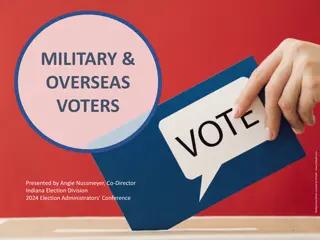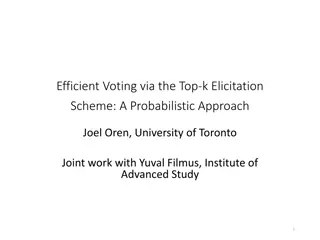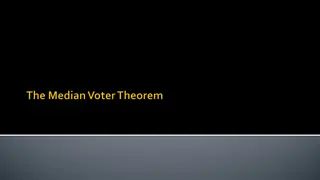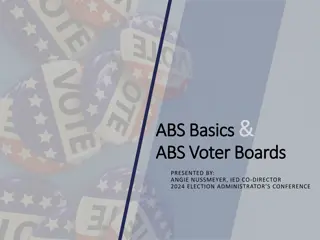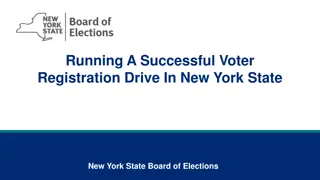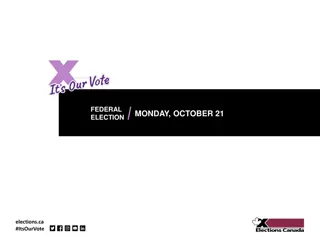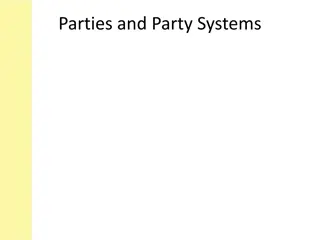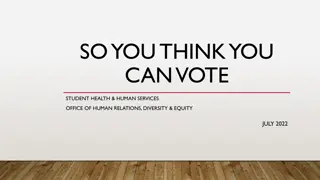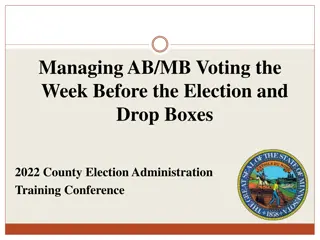Understanding Party Identification and Voter Bias in Voting Behavior Theories
Party identification theory posits that voters develop a psychological attachment to political parties, leading to long-term support independent of policies. Voter bias reflects individuals favoring their own party despite performance evaluations. These theories emphasize early socialization and class ties affecting voting behavior, shaping electoral outcomes in political systems.
Download Presentation

Please find below an Image/Link to download the presentation.
The content on the website is provided AS IS for your information and personal use only. It may not be sold, licensed, or shared on other websites without obtaining consent from the author. Download presentation by click this link. If you encounter any issues during the download, it is possible that the publisher has removed the file from their server.
E N D
Presentation Transcript
Theories of Voting Behaviour Image result for athenian voting Party Identification Model
Success Criteria I can Describe the Party Identification of voting behaviour Explain why the Party Identification model can be questioned What you will learn Describe the Dominant Ideology Model of voting behaviour
Party Identification This theory is based on the sense of psychological attachment that people have to parties. Voters are seen as people who identify with a party, in the sense of being long-term supporters who regard the party as their party. This group of voters are known as partisan voters Voting is therefore a manifestation of partisanship, not a product of influence by policies, campaigns etc. Those who are influenced by policies, campaigns etc are floating voters . This model places heavy stress on early political socialisation i.e. through family.Most people vote the way their family votes as they have been influenced by family at early stage and political loyalties are then formed.
Voter Bias Voters display bias towards their own party, in that people who identify with a Political Party will vote for that party most of the time even if they don t think the party is doing a good job. This was particularly true in the post war period. Oct 19741979 92 97 01 05 10 % % % % % % % Conservative 22 34 31 21 24 25 31 Labour 57 49 49 59 55 48 40 Lib / Alliance / LD 16 13 16 13 13 18 17 It can also be seen in each of the 2005/2010/2015 elections most of social class DE have voted for Labour, even when they were not seen to be the best option.
Voter Bias This long-term attachment to a specific party (partisanship) colours a voter s perception of politics and is expressed by them at election time. Voting is a reflex rather than a choice. There are clear links to class here however this is NOT the same as the theory behind the Sociological Model.
Party Identification and class Party identification is often the political extension of class identification or a residual identification with a class one has left. In the Party ID model some voters vote against their natural class parties, e.g. Labour being the most popular party among some middle class groups, like teachers. A two-party system allows for this, reflecting the major ideological division in society. There is very limited voting for smaller parties.
Party Identification and class 200 1 Oct 1974 1979 1983 1987 1992 1997 2005 2010 % % % % % % % % % Middle class (ABC1) Conservative 56 59 55 54 54 39 38 37 39 Labour 19 24 16 18 22 34 34 30 27 Lib / Alliance / LD 21 15 28 26 21 20 22 26 26 Skilled working class (C2) Conservative 26 41 40 40 39 27 29 33 37 Labour 49 41 32 36 40 50 49 40 29 Lib / Alliance / LD 20 15 26 22 17 16 15 19 22
Party ID and Dealignment? The Party ID model fails to address the continued evidence of dealignment - some commentators argue that class support for political parties has started to decline. For example, support for the main two parties has declined from over 95% in the 1950 s to around 68% in 2015, and voting behaviour has become more volatile. https://www.youtube.com/watch?v=mYzQzJ 262Qw
Party ID and Dealignment? This model is also seen to fail to take individual interest into account (Rational Choice?) as well as the growing influence of short term influences on voting. Evidence of Conservative voters voting UKIP and in Scotland most of the SNP gains in the 2015 election were at the expense of the Labour party. https://www.youtube.com/watch?v=- 6_zWG0b9ak https://www.youtube.com/watch?v=BqIZKYVa 7a0
Relevance of Party ID model? The Party Identification model has become weaker although there is still evidence that it carries on. 29% of the electorate were partisans in 1974, but only 9% in 2005. The number of DE voters who continue to vote for the Labour party and A voters who vote for the Conservatives does highlight partisanship still exists in the UK. The electorate is more volatile than in the past due to changes in class identification (particularly through policies of the 1980s), changes in the parties ideological positions, which brought the parties much closer together ideologically, the increasing importance of TV as the major source of news, and better education, which encourages critical thinking and the assessment of policies rather than a simple blind adherence to a party whatever their policies.
Questions 1. Summarise the Party Identification Model, using the following terminology: partisan voters; not a product of influence and early political socialisation. 2. Explain why the Party Identification Model can be questioned.


